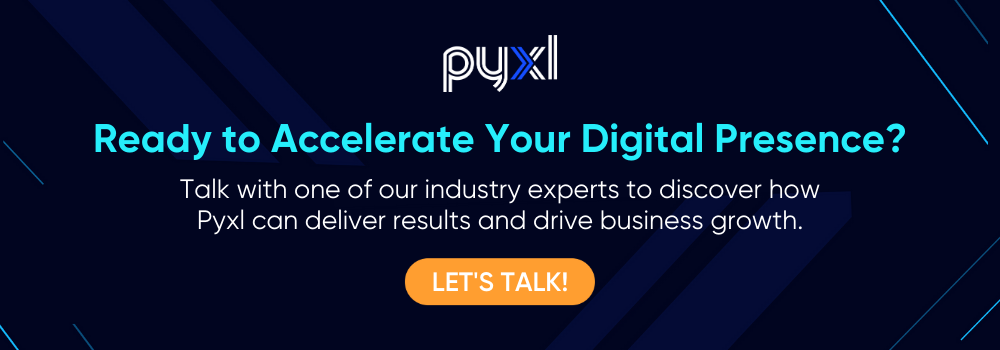3 Steps for Creating a Graduate School Marketing Strategy
Developing a meaningful marketing strategy for any business can lead to an increase of awareness, customers, and overall revenue. The same is true for a graduate school, so if you are looking for ways to promote your programs, look no further! Inbound marketing is key as its purpose is to drive awareness and consideration to a product or service. Utilize inbound marketing in order to promote your school to both new and current students.
Here are 3 steps to take when creating a graduate school marketing strategy.
1. Review the buyer’s journey.
The buyer’s journey is the decision-making process customers – or in this case, students – go through before making their final decision. The buyer’s journey has three distinct stages: awareness, consideration and decision. For each stage of the buyer’s journey, you’ll want to have unique personas and content tailored specifically for them.
Awareness
At this stage, undergraduate students may be deciding if they want to go to graduate school, so they are currently researching their options. As they go through this research phase, they will be more attracted to non-biased content and statistics about graduate school, so make sure plenty of introductory content is readily available.
Consideration
In this stage, students will start applying to different graduate schools. When targeting the group of undergraduate students currently attending your university, you’re at an advantage because there is already an established relationship. For students not currently attending your university, you need to be creative with your messaging to let them know how they’d benefit from your graduate school in specific. Now is the time to introduce content like comparison charts to show how your school stacks up against others, as well as checklists that show information like how to apply for graduate school.
Decision
Now, it’s time for the student to make a final decision on where to attend graduate school. Lay out the benefits for not only current undergrads at your university, but also prospective new students. Close the deal by offering a one-on-one chat with an admissions counselor, financial aid adviser or personal tour.
2. Create your personas.
Buyer personas are semi-fictional representations of your ideal customers (or in this case, students) based on research and some educated speculation. These are the people you will be targeting. Your buyer personas should include information like demographics, pain points, needs, goals, and behavior. For this example, let’s meet “Junior Josh.”
Josh is a junior at ABC University majoring in engineering. Josh spends most of his time studying, but he likes to spend his free time playing football with his friends, watching movies, and visiting family. He’s very involved on campus as a representative for the engineering program in the Student Government Association and president of his fraternity.
He has really enjoyed his time at ABCU and wants to stay to pursue his graduate degree. He knows he wants to continue his education in engineering, but he isn’t sure what his options are when it comes to financing his graduate degree or what standardized tests are required for admission. His parents are willing to help him fund his graduate degree, but they want him to do the research to learn what his options are.
You may also have additional variations for more specific programs like “Psychology Patrick” or “Veterinarian Vicky.”
3. Create a content marketing plan.
Once you’ve reviewed the buyer’s journey and established personas, start creating content! Keep these people and their situations in mind as you craft blogs, premium content, emails, and social media posts tailored to their needs and interests.
Blogging
Consider dedicating a section of your blog to graduate school. From admissions to surviving this next level of school, blogging is the perfect way to gain attention. Plus, it will help boost your SEO and chances of being found. Blog posts are ideal awareness stage content because they’re easily digestible, and with proper SEO, they are easily searchable. Focus on topics like the benefits of graduate degrees, how to find graduate school scholarships or study tips for the GRE.
Premium Content
Students considering graduate school can benefit from premium content, such as guides or checklists. For maximum success, make sure your premium content is housed on a landing page and gated with a form. Even though you already have contact information for your current students in your database, this will allow you to determine which segment of your students are interested in attending your graduate school. When your current students are presented with a form, you can use smart form fields and progressive profiling through marketing automation platforms like HubSpot to learn more about them without requiring them to fill in information they’ve already given you. With potential students not currently at your institution, this information will be imperative.
Email Marketing
From promoting premium content and blog posts to announcing graduate school information seminars, email marketing should be a key staple in your content marketing plan. Since your premium content is housed on a landing page with a form, you’ll already know which segment of your students should receive graduate school-related emails based on their answers to form questions like “What year in school are you?” You can take it a step further by segmenting your email lists by persona, too (or a multitude of other factors).
Social Media
Utilizing social media is important for most companies, but especially universities. Your target audience spends quite a lot of time on Facebook, Twitter and Instagram – maybe even LinkedIn – so meet them where they are by posting on social media. Of course, the type of content you share will vary on each platform, but make sure you’re directing everyone back to your site and sharing links to blogs and premium content. You can also “boost” certain posts or run ads targeted to your potential graduate students to gain more attention. Consider creating an account specifically for graduate admissions to ensure you don’t unintentionally bombard potential undergraduate students with irrelevant information, and vice versa.
As you go through the inbound marketing process to promote your graduate school both to your current undergraduate students and those outside your university, keep in mind that you’re speaking to many different people who are in different stages of the decision-making process. Following this plan will help keep things streamlined, making sure your messaging is reaching the right people at the right time.
Interested in learning more about marketing to your current and potential students? Pyxl has years of experience partnering with higher education clients to accelerate their marketing strategy, including The United States Air Force Academy, South College, and more! Contact Pyxl today to discover how we can increase awareness and overall revenue for your school.
Updated: Apr 13, 2022

 Kati Terzinski
Kati Terzinski Bonnie Winter
Bonnie Winter